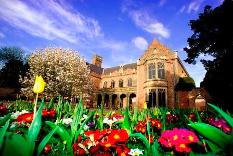South Holland is rich in heritage, both natural and man-made, with lots to see and do!
It is a rural district in the south east of the county, that is made up of a picturesque mixture of bustling market towns and attractive villages, surrounded by the beautiful open spaces of the Fens.
South Holland was originally covered with marshland, first drained by the Romans. The earliest trace of humans is stone tools dating to around 13 000 BC. From about 43AD the sea moved out from the land, leading to an industry making salt out of seawater. Saxons and Vikings arrived, giving rise to some surviving place names like Holland itself (‘high’ land).
The area reached its height during the medieval period. People began draining the marshland, giving more space for crops and animals. South Holland was particularly well known for the quality of its wool, which led to great wealth for many. This wealth led to the building of a number of large churches, which can still be seen around the district.
Although many of South Holland’s museums are closed to visitors at present, the district is definitely worth exploring.
We would recommend checking out the following sites and their social media for more information
Ayscoughfee Hall Museum & Gardens www.ayscoughfee.org
Chain Bridge Forge www.heritagesouthholland.co.uk
Crowland Abbey www.crowlandabbey.org.uk
Friends of Spalding Cemetery www.friendsofspaldingcemetery.co.uk
Holbeach Cemetery Chapels www.holbeachcemeterychapels.org.uk
Moulton Windmill www.moultonwindmill.co.uk
Pinchbeck Engine Museum www.wellandidb.org.uk/about-us/our-museum
Spalding Gentlemen’s Society www.sgsoc.org
The Museum of Technology, Gadgets and Gizmos www.museumoftechnology.org.uk

